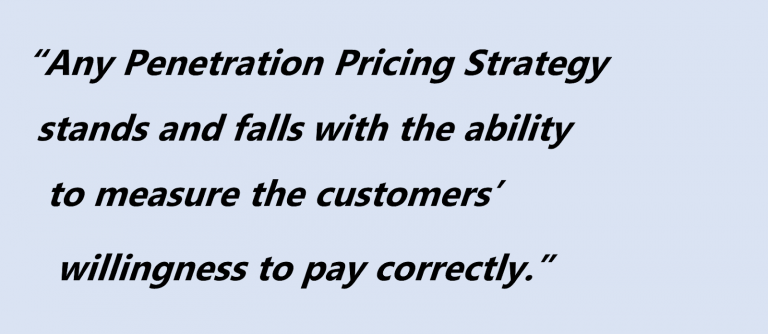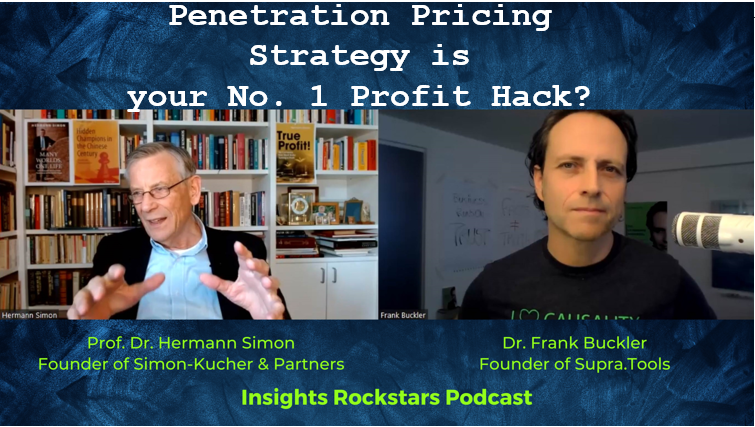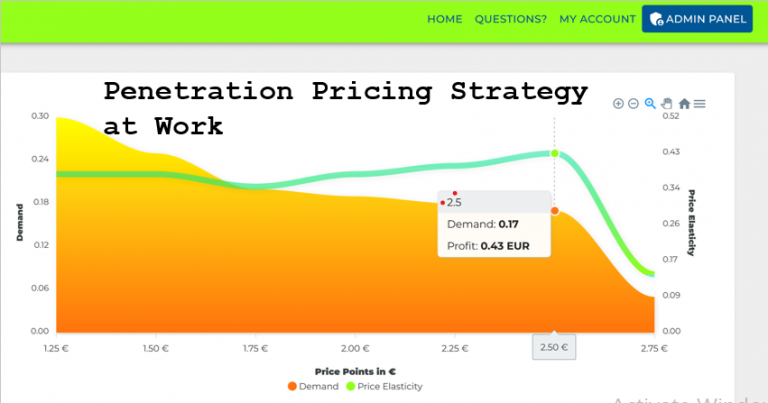
Do you want to know how to start selling your products? We’ll show you how to do it with our guide on penetration pricing strategies!
The goal of penetration pricing is to gain market share by offering a low price. To do this, businesses need to understand their target market and what they are willing to pay. They also need to be able to produce their product at a low enough cost to make a profit at the lower price point.
Penetration pricing can be a successful strategy for businesses looking to grow their market share quickly. It can also be used as a way to enter a new market. However, businesses need to be aware of the risks associated with this pricing strategy, such as losing money if demand is not as high as expected or if costs rise unexpectedly.

Penetration pricing is a strategy businesses use to attract customers by offering a low price for a new product or service. The goal is to gain market share quickly by appealing to price-sensitive consumers. This pricing strategy can be risky, as it can lead to losses if customers do not continue to purchase the product or service once the introductory price expires.
Regarding pricing, there are a few key strategies businesses can use to increase sales and gain market share. One of these strategies is called penetration pricing.
Penetration pricing is when a company prices its products or services below the competition to attract customers and grow market share. This strategy can be effective in several ways.
For one, it can help increase sales in the short term as customers are more likely to purchase a product priced lower than its competitors. Additionally, penetration pricing can help build brand awareness and customer loyalty over the long term.
If you’re considering penetration pricing as part of your marketing strategy, you should keep a few things in mind.
If used effectively, penetration pricing can be a powerful tool for growing your business. Just make sure that you have a solid plan in place before implementing this strategy.
There are three common types of penetration pricing strategies:
This involves setting a high initial price for your product or service to skim the cream off the top of the market. This strategy is often used when launching a new product or service onto the market.
Setting a high price means you can profit more from the early adopters willing to pay a premium for your offering.
This strategy involves setting a low price for your product or service to penetrate the market and gain a larger market share. Setting a low price can make your offering more attractive to potential customers and gain a larger market share.
This strategy involves pricing your product or service based on customer segmentation. This means that you will charge different prices to different people based on their income, location, or purchasing power.
Companies with a monopoly on their product or service often use this strategy. You can maximize your profits by charging different prices to different groups of people.

Penetration pricing is a pricing strategy where you offer a low price for your product or service to gain market share. There are several advantages to using this strategy:
If you’re considering using penetration pricing, ensure you have the financial resources to sustain it in the long term. When used correctly, it can be a powerful tool to help your business grow and succeed.
Penetration pricing can be a very effective marketing strategy, but it also has disadvantages.
The bestselling book „Pricing Intelligence“ has more on the topic and

Case studies of effective penetration pricing is a popular pricing strategy in which a company sets its prices low to gain market share. In many cases, it can be an effective way to boost sales and profits.
But how do you know if penetration pricing is right for your business? To help you make that decision, let’s look at three case studies of businesses that used penetration pricing successfully.
1. Company A sells software products. It decided to offer its products at a 50% discount for the first year, to attract new customers. As a result, it increased its market share by 15%.
2. Company B manufactures electric vehicles. It decided to price its vehicles 20% below the competition to gain market share quickly. As a result, it achieved a 30% market share within two years.
3. Company C sells home appliances. It decided to offer its products at a 10% discount for the first six months of operation to attract new customers. As a result, it increased its market share by 5%.
As you can see from these case studies, penetration pricing can be an effective way to gain market share and boost sales and profits. If you’re thinking about using this pricing strategy for your business, be sure to do your research and crunch the numbers carefully before making your final decision.

Some professionals prefer to access video tutorials around pricing and insights
Penetration pricing can be risky, especially for small businesses. If you price your products or services too low, you may not be able to make a profit. And if you’re not careful, you could end up undercutting yourself and damaging your brand.
Overall, penetration pricing can be helpful for businesses looking to gain market share quickly. However, there are some risks involved that should be considered before using this strategy.
Here are some tips to avoid the risks associated with penetration pricing:
Before implementing a penetration pricing strategy, ensure you have researched and understand the market you are entering. This will help you determine the right price for your product or service
Make sure you clearly understand all the costs associated with producing and selling your product or service. This will help you avoid losses down the road
Once you have implemented a penetration pricing strategy, it is important to monitor your results closely. This will help you adjust your strategy as needed and avoid any potential pitfalls.
There are many examples of successful penetration pricing strategies.
If you’re considering using a penetration pricing strategy for your business, it’s important to research and ensure it’s the right fit for your products or services. But if done correctly, it can be an effecti

Today pioneers use the latest pricing survey tools that use Neuroscience + AI
Interested professionals can use some tools even for free and explore on its own
You can access supra tools free here.
So far, we have concluded that for all business owners, the penetration pricing strategy is an effective strategy to boost sales. This involves setting a low initial price for your product or service to attract customers and gain market share. Thus, to increase sales quickly, penetration pricing may be the best option.
By setting a low initial price, you can attract more customers and get them in the door. Once they’re hooked on your product or service, you can gradually raise prices. That said, penetration pricing can be a successful strategy if done correctly. It can help you gain market share and build brand awareness. But it’s important to do your research and ensure a solid plan. Otherwise, you could end up doing more harm than good.
In my email newsletter “Pricing Insights” I cover the whole range of pricing insights solutions-from Garbor Granger to Conjoint, from NeuroPricing to Pricing Software Systems. I describe the application in various fields from new product pricing to promotion, from brand premium to feature pricing.
Keep up to date here.